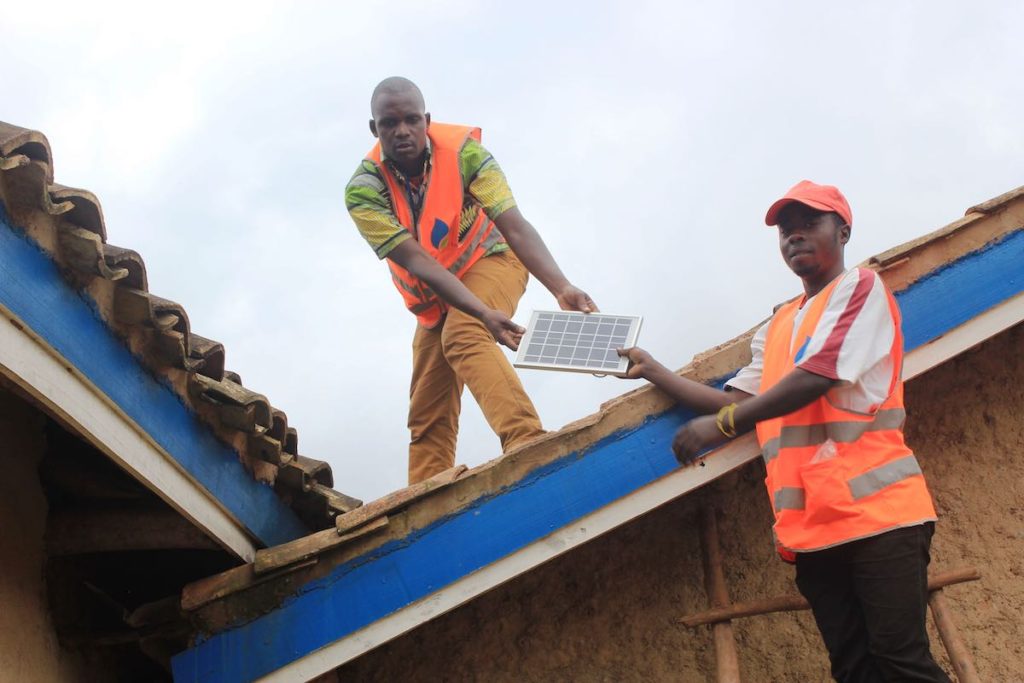Since its establishment in 1983, the Development Bank of South Africa (DBSA) has rapidly advanced to become one of the crucial catalysts in the transition to a green economy.
One of the greatest challenges faced by many governments, is how to green the current economy so that it remains resilient and globally competitive. The UN’s Sustainable Development Plan has also put pressure on countries, including South Africa to respond to global goals and targets by 2030, with SA targeting the challenges of clean energy, low-carbon transport, smart water, the circular economy, and smart agriculture. However, to do so requires substantial finance, which largely falls on the ability of development finance institutions such as the Development Bank of Southern Africa (DBSA) to leverage available resources to crowd in private investment.
The DBSA works across Sub Saharan Africa to promote economic and social development, by sourcing and providing largely infrastructure finance. Climate change has become increasingly important and as such one of its priority focus areas is climate finance. According to Olympus Manthata, Head of Climate and Environmental Finance the ability to mobilise climate finance at scale requires innovative approaches such as the Climate Finance Facility. The DBSA brought about its Climate Finance Facility (CFF) a climate -related lending facility, which is a first in Africa that is based on the “Green Bank” model.
‘CFF uses a blended finance approach, which essentially combines public finance with private finance, to address market constraints and fill market gaps. These funds are for private projects that have potential but cannot currently attract market-rate capital at scale without credit enhancement. We bridge this gap and catalyse private funding by co-funding alongside developmental and private sector financial institutions, with the aim to achieve a 1:5 leverage.’

The initial debt funding of R2-billion in use by the DBSA is a rand-denominated facility and directed purely at co-funding private sector projects in South Africa, eSwatini, Lesotho and Namibia – countries in the common monetary union. It brings credit enhancement products in the form of a first loss or subordinated funding and tenor extension of up to 15 years, combined to concessional funding provided by the UN’s Green Climate Fund (GCF).
Development of Climate Facilities
The DBSA with support from the GCF is currently developing various Climate facilities such as the “National Water Reuse programme, which it aims to have finalised in the last quarter of this financial year. The DBSA will thereafter, submit a funding proposal for some ~US$150 million to the GCF for the concessional part of the finance facility, and the bank itself aims to contribute significant co-financing for further credit enhancement.
‘The package we are designing is aimed to make water re-use projects bankable.. Water tariffs often limit the cost at which water is costed, our solution is to target new and existing wastewater treatment plants that either need to be upgraded or expanded and increase municipalities awareness of how to treat effluent water for re-use,’ says Manthata.

We are also taking a comprehensive broad approach because there is a tendency to look at such projects in isolation. However municipalities generally experience the same challenges and there are many lessons from those that present benefits for all that will partake in the programme. And with a single programme in use, transaction costs will lower.’ This was proven to be the case with the renewable energy programme when financiers became more familiar and comfortable with conditions of contracts .
Currently some 56% of SA wastewater plants are in poor or critical condition, confirms Manthata, with the bank suggesting that it will take between 20 and 30 years to correct, but again this is going to require public and private sector buy-in. ‘If we can change the negative perceptions around water reuse, that it is not a wasted resource but has the ability to produce energy and that its sludge has value for example, the resulting revenue streams generated can potentially be used to finance other climate mitigating projects.’
DBSA’s role in key Infrastructure Development Projects
Further credibility for the DBSA’s role in such projects comes from its playing a key role in developing the market for Independent Power Producers (IPPs), through the Renewable Energy Independent Power Producers Programme (REIPP). The bank has already invested R12.4-billion into 14 REIPP projects, of which R2.5-billion was funding support for nine BBBEE entities and 15 local community trusts.
The bank is also looking at investing in the country’s Embedded Generation Investment Programme (EGIP) to the tune of US$84-million directed similarly at BBBEE organisations and local community SMME’s that are specifically focused on renewable energy. ‘EGIP is transformational in that it will add more than 450MW of new generating capacity that in turn directly avoids more than 700 000 tonnes of carbon emissions per annum,’ states Manthata.
Green Bonds
Yet another of DBSA’s tasks is to manage The Green Fund on behalf of the Department of Forestry, Fisheries and the Environment that allows the DBSA to provide access to funds for low-carbon and climate-resilient development. The Fund had an initial allocation of R1,1-million for disbursement, set to be used as additional and complementary funding for green projects and programmes.
To further reiterate the DBSA’s role and commitment to climate-change efforts, it also issued its first Green Bond in February through a private placement with French development finance institution, the Agence Française de Développement (AFD), with whom the bank has concluded many successfully infrastructure financing facilities. Worth R3.59-billion, the bond will help finance domestic projects that will contribute to the green economy.
‘The DBSA Green Bond issuance will be applied to projects that contribute specifically to climate mitigation and/or adaptation, aligned to the National Development Plan and sustainable development goals,’ confirms Manthata. ‘This inaugural issue is however, intended primarily to refinance select renewable projects under the REIPP but future issuances will also include wind, solar, small-scale hydro and certain biomass energy projects.’
More information visit www.dbsa.org

